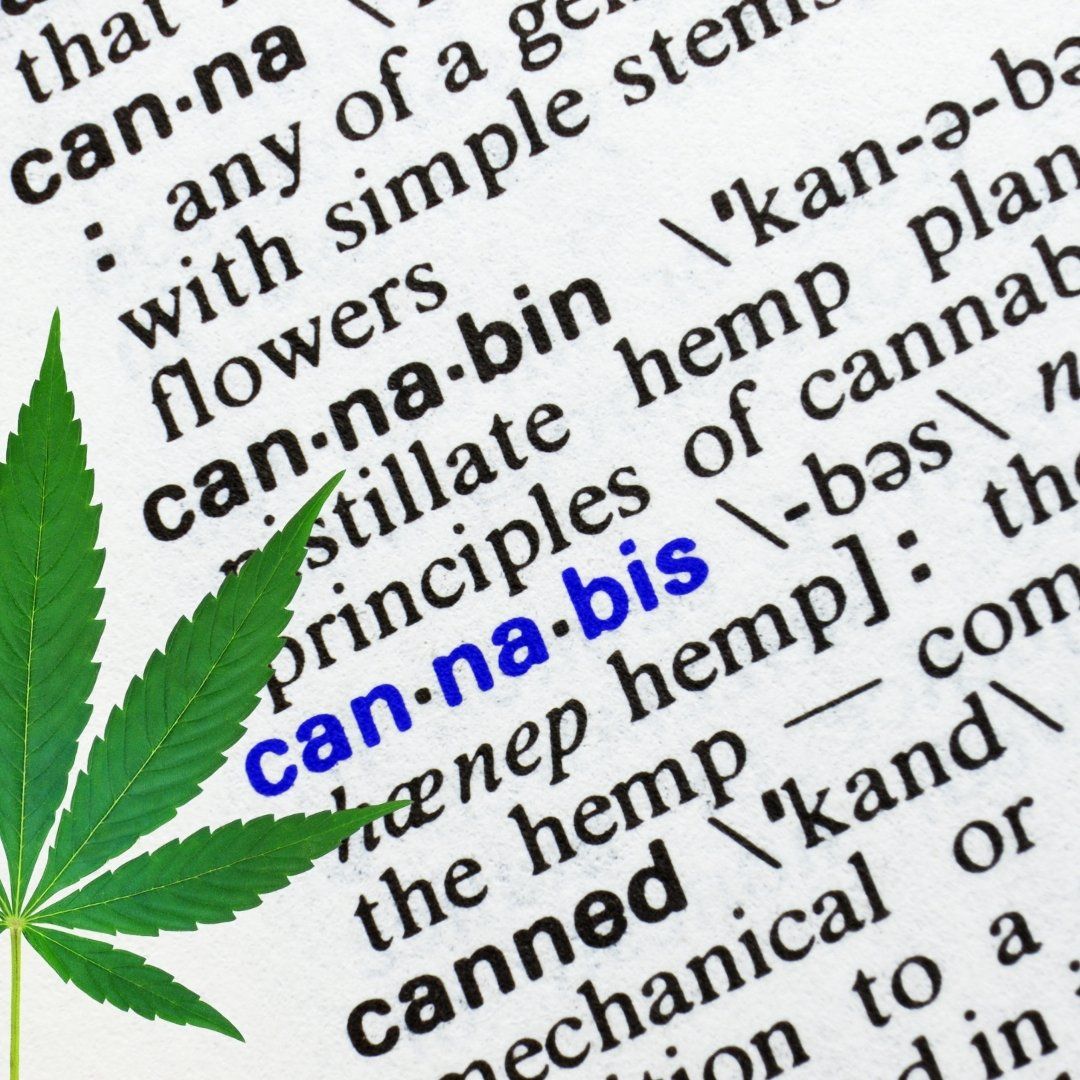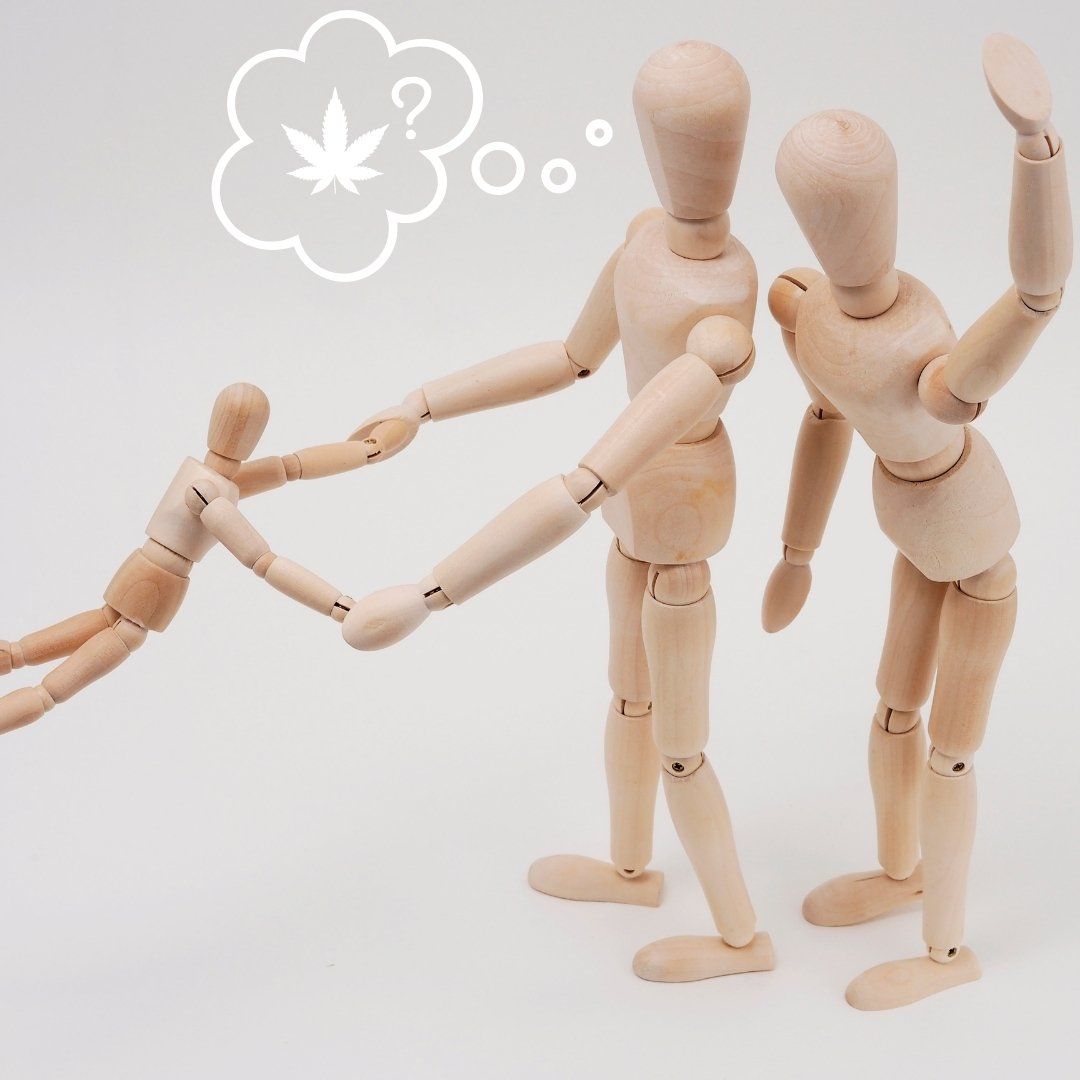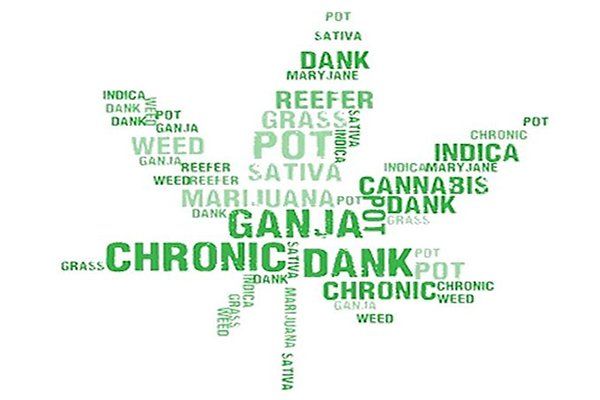We're Talking About Cannabis
Marijuana became taboo in the 20th century. Throughout generations of prohibition, cannabis has morphed in colloquial identity from marijuana to reefer to pot to the devil’s lettuce to weed. Words we didn’t dare utter in front of our family members. Words we kept outside the home.
Cannabis may still be a touchy subject for you or for your friends and family, which is why at Local Roots, we have created a safe space for all your cannabis questions and pent up cannabis experiences. We offer a semi-private area for conversation or consultation on site at our cannabis retail outlet, and we are happy to walk you through or just listen to your cannabis journey so far.
We’ve compiled a list of terms to know to talk about cannabis today:
ANANDAMDE: A cannabinoid produced in the body that mimics the structure and effects of tetrahydrocannabinol (THC). Discovered in 1992, it was named for the Sanskrit word “Ananda” which means “bliss”.
CANNABIDIOL (CBD): One of the two primary cannabinoids found in the cannabis plant. CBD is the non-psychoactive cannabis compound commonly associated with hemp. CBD in tandem with tetrahydrocannabinol (THC) may be the most effective ratio for achieving your endocannabinoid balance without the unwanted “high” effect commonly associated with cannabis.
CANNABINOID: A compound occurring naturally in the cannabis plant and in the mammalian body. Plant cannabinoids are called “phytocannabinoids” while bodily produced cannabinoids are called “endocannabinoids”. Both types of cannabinoids act on neurotransmitter receptors located all over the human body including in the brain and in immune cells.
CANNABIS: The genus under which the species marijuana and hemp are classified. States in which medical marijuana are legal often use the term “cannabis” in an attempt to destigmatize their industry and plant.
DECARBOXYLATION: Refers to a chemical reaction where plant cannabinoids in their acidic form (CBDA, CBGVA, THCA) are heat-activated through convection or conduction.
ENDOCANNABINOID SYSTEM (ECS): The largest system of receptors in the human body. The endocannabinoid system is a natural regulator, and may be responsible for hundreds of internally controlled responses including memory, reflexes, mood, pain sensation, and inflammation. ECS receptors, called CB1 and CB2, are found in various parts of the brain, organs, connective tissue, and immune cells.
ENTOURAGE EFFECT: Also known now as the “Assembly Effect”, suggests that all of the plant compounds including major and minor cannabinoids and terpenes will have a more desired and stronger effect than isolated CBD or THC manufactured products.
TERPENES: Organic compounds that secrete from cannabis plant glands which provide the nuanced fragrance and flavor of various strains.
TETRAHYDROCANNABINOID (THC): One of the two primary cannabinoids found in the cannabis plant, commonly associated with cannabis-marijuana. THC is the psychoactive compound, which after inhaled or ingested, may have a mind-altering effect.
TRICHOMES: Resin-glands, often called “crystals”, which contain cannabinoids and terpenes.

Starting off new to cannabis use can be intimidating with so many new terms to learn. Cannabinoids, terpenes, Endocannabinoid System, and more can appear confusing or complex but there is no reason to feel overwhelmed! This blog will break down some of the common cannabis terms so that you can use this knowledge to feel more empowered when selecting cannabis products! In order to understand the foundation of common cannabis terms you will first need to know what the Endocannabinoid System is. The Endocannabinoid System is a complex cell signaling system that regulates body functions such as homeostasis, your nervous system, and your immune system. The Endocannabinoid System also produces the runner’s high. The Endocannabinoid System involves endocannabinoids, receptors, and enzymes that help your body to function properly. The main endocannabinoid receptors are CB1 and CB2 receptors. CB1 receptors are found predominantly in your Central Nervous System where as CB2 receptors are found in your Peripheral Nervous System. Enzymes are useful for breaking down endocannabinoids once they have fulfilled their purpose. Now that you know a bit about the Endocannabinoid System let’s discuss how cannabinoids such as THC and CBD interact with it! Cannabinoids are the compounds within the cannabis plant that produce effects within the body by interacting with endocannabinoid receptors. Cannabinoids can regulate how cells communicate by directing how they send, receive, or translate their functions. Some common cannabinoids include CBN, CBG, CBC, THCV, CBD, and THC. THC, otherwise known as Tetrahydrocannabinol, is the most common psychoactive cannabinoid within the cannabis plant. It is the cannabinoid that interacts with the Endocannabinoid System producing a feeling of being euphorically high. CBD, known also as Cannabidiol, is the non-psychoactive cannabinoid within the cannabis plant that may offer therapeutic benefits. CBD can block out THC from interacting with endocannabinoid receptors when taken in larger amounts than THC which may help lessen its effects. When THC and CBD are taken in equal amounts the effects of THC are heightened and may produce a more balanced and pleasurable high. TAC is another acronym that is seen on a dispensary’s menu. TAC is Total Active Cannabinoids. It measures the potency of the product through adding the amounts of the cannabinoids, terpenes, and other compounds present within it. What are Terpenes you ask? Terpenes are the aromatic compound of the cannabis plant. Terpenes are what gives each cannabis strain its own unique taste, smell, and effects. Terpenes are known to possibly provide therapeutic effects. Terpenes are oftentimes more important than a high THC content when choosing the affects you wish to experience. When terpenes and cannabinoids work synergistically together to create many unique benefits and effects caused by the full spectrum aspect within a product it is called the Entourage Effect. Terpenes and cannabinoids each have different boiling points. The different temperatures when heating cannabis flower or oil causes different terpenes and or cannabinoids to be more bioavailable for your body. When in doubt about what temperature to use always opt for a lower temperature setting. There are three different strains that cannabis can be categorized in. Cannabis Sativa, Cannabis Indica, and Cannabis Ruderalis (Hybrid). Cannabis Sativa plants tend to have longer leaves and grow in warmer climates. The effects of Sativa strains may be energizing, uplifting, and may have more cerebral effects. Indica strains tend to have shorter leaves and grow in cold climates. Indica strains may produce sleepy and more body focused effects. Hybrid strains are the combination of Indica and Sativa strains and may have more balanced, relaxing, and or creative effects. Some other terms you may see or hear in a dispensary tend to be in regard to products. Cannabis flower is the bud of the cannabis plant, pre-rolls are cannabis filled cigarettes, topicals are cannabis infused lotions and body care items, and edibles are cannabis infused food, drinks, capsules, or oils. Some terms you may not be familiar with are chillums and concentrates. Chillums are glass pipe pieces that can come pre-packed with flower. Cannabis concentrates are extracted THC products that are intended to be smoked or vaporized. Concentrates come in different textures and are often very potent. They can be smoked sandwiched in between flower or vaporized in a dab rig or concentrate vaporizer pen. Cannabis concentrates, like cannabis flower, can be decarboxylated to make your own edibles! Many people start with vape cartridges before moving to concentrates, however there are a few that are less potent. Kief, moonrocks, and hash rosin are great when transitioning to trying concentrates. Kief is the extracted trichomes from the cannabis plant and can be sprinkled and smoked on top of flower. Moonrocks are cannabis flower rolled in cannabis oil and kief and can be smoked with flower. Avoid placing your moonrock in a grinder! Now that you know a bit about some of the common terms used within the cannabis industry you can share your knowledge with others or use it to discover the best products for you! If you still have questions don’t be shy to reach out to your budtender when you are placing your order. We are always here to help!

Cannabis may help improve various aspects of your life however even today cannabis users can face stigmas, especially when it comes to parenting. Too often the myth of the lazy cannabis user is utilized to judge and stereotype and can be hurtful to those it is targeted at. Today we will analyze this myth and ways that cannabis using parents can combat it! The myth of the lazy stoner came about shortly after the 1937 Marijuana Tax Act which criminalized all but industrial use of cannabis. Racism and prejudice created an association between immigrants and cannabis use creating negative stereotypes. These stereotypes were furthered by the War on Drugs in the 1970’s which repealed the Marijuana Tax Act claiming that cannabis held no medicinal value. Cannabis has a long history of being used for therapeutic and recreational purposes dating as far back as 500 BCE in places such as China and Siberia. In the United States during the 1800’s various different cannabis extracts were commonly sold in pharmacies and prescribed to those looking for symptom relief by doctors. Today parents struggling with chronic illnesses often turn to cannabis use to help improve their quality of life. Due to being able to find symptom relief, parents who use cannabis are able to better enjoy their time with their children and can be more attentive to them. Cannabis may be able to help parents be able to engage in more activities and keep up with the physical demands of parenting, proving the lazy stoner stereotype is just a myth! Knowing why the stereotypes exist is one thing but figuring out how to handle explaining to other people or even your children can be a difficult situation. Using cannabis is a private matter, so you should not feel pushed to have to divulge this information. Talking to your children about cannabis can help prepare them for comments or misinformation that they may encounter in the outside world. Explaining to them about cannabis safety such as not touching your cannabis products may help avoid unwanted situations. Explain to your children that cannabis use is for adults 21 years or older and that for young children with developing brains it is not a safe product for them to consume. As an adult you should always keep your cannabis stored properly and locked up out of reach! Avoid smoking in your home as cannabis smoke can be harmful for children. Make sure there is someone to care for your children for you while you are consuming cannabis and do not use cannabis products when you are planning to drive. Marijuana products can be mistake for food or candy by children, so make sure to store them out of sight. If a child consumes cannabis products call the poison control hotline or bring them to the emergency room. Communicating with your loved ones about cannabis can help bring the family together and develop stronger bonds through honesty and openness. A recent study shows that 1 in 8 people in the United States use cannabis, so maybe more adults than you know consume cannabis! If cannabis helps you be a better parent to your children, then ignore the stigma and just enjoy life’s precious memories!

Valentine’s day is quickly approaching and you’re unsure of what to buy for the cannabis lover that you love? No worries, we got you covered! Here are some Valentine’s Day gift ideas just for you. Edibles are an excellent option for gift giving as they don’t require any accessories to consume! From chocolates to gummies, oil applicators, tinctures, capsules, and hard candies, the options are endless as to what you can choose. With so many options, where do you begin? Start by thinking about the lifestyle of the person you are purchasing for. Do they have dietary restrictions? Are they new to using edibles? If your cannabis lover is new to edibles it is always best to buy an edible with a lower potency per piece. Remember the advice of start low and go slow as this will help prevent the over consumption of THC edibles. Edibles will take around 2 hours to digest and may last 4-12 hours. Most edibles will have an easy to distinguish 1-5mg serving size. This may be a great starting dose for a beginner. You may want to avoid making your own edibles for you or your lover’s first edible experience, but if you do cook with cannabis oil make sure to know how much THC will be in each serving so that you can inform your loved one. Ask your budtender for recommendations and educational handouts on edibles that you can include alongside your gift! If you are in the romantic mood you can gift a topical to your lover. Massage oils, salves, lotions, patches, and intimate lubricants are all great for getting closer with your partner. The effects of the topical may provide localized relief within moments and may last for 4-12 hours depending on the type of topical used. Most topicals will not produce a psychoactive high but make sure to ask your budtender if the one you are purchasing may produce the effects you are looking for. Topicals may help ease sore muscles and may provide body relaxation so you can recover from your passionate night! Another great option would be pre-rolls! Pre-rolls are a convenient way to get high and are small enough to fit in almost any gift bag! Want something new to add with your gift? Try a chillum! The chillums we currently sell are reusable glass pipe pieces that come pre-packed with a small amount of flower. It’s a great way to try a new strain or for a quick smoke session before your Valentine’s Day dinner date. Smoking brings feelings of nostalgia but what if you want to gift a more discreet option? If this is the case then vape cartridges may be what you’re looking for! Vapes offer a portable and smell less option for a date that is on the go. Like almost any smoking consumption method the effects are nearly immediate and may last for a few hours. Due to the higher potency of vape cartridges euphoria and bliss may be inevitable and some strains may act as an aphrodisiac. Need something stronger? Ask your budtender for recommendations on concentrates! If you are still unsure of what would be a perfect gift for your loved one or for yourself please reach out to us! We are here to answer your questions and help guide you towards the best cannabis experience possible. If you are interested we currently have a Valentine's Day Bundle that is available for a limited amount of time! You can find it on our online menu through the link below!


